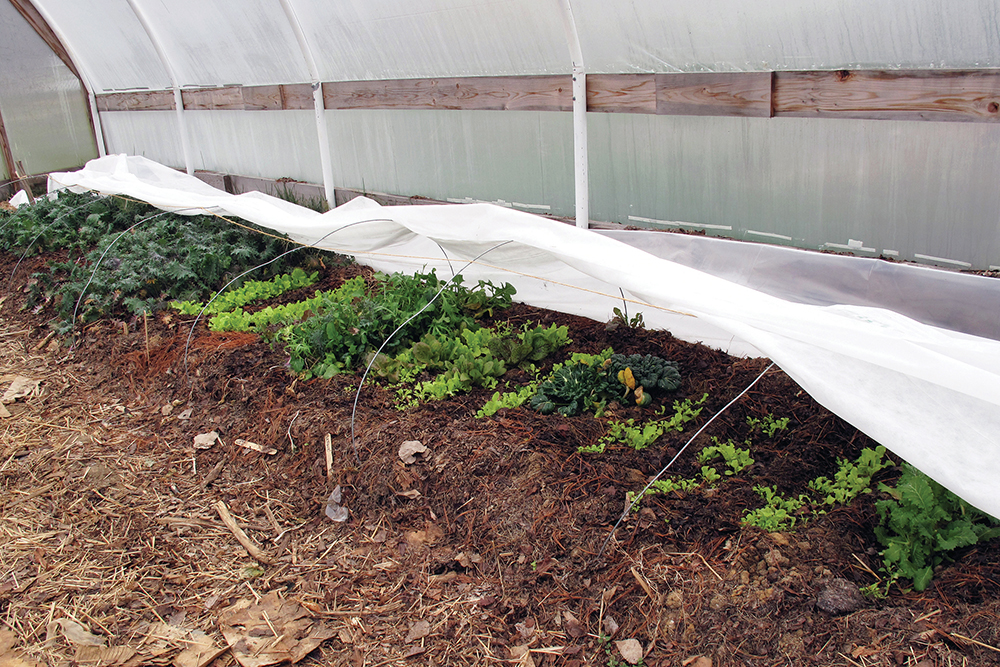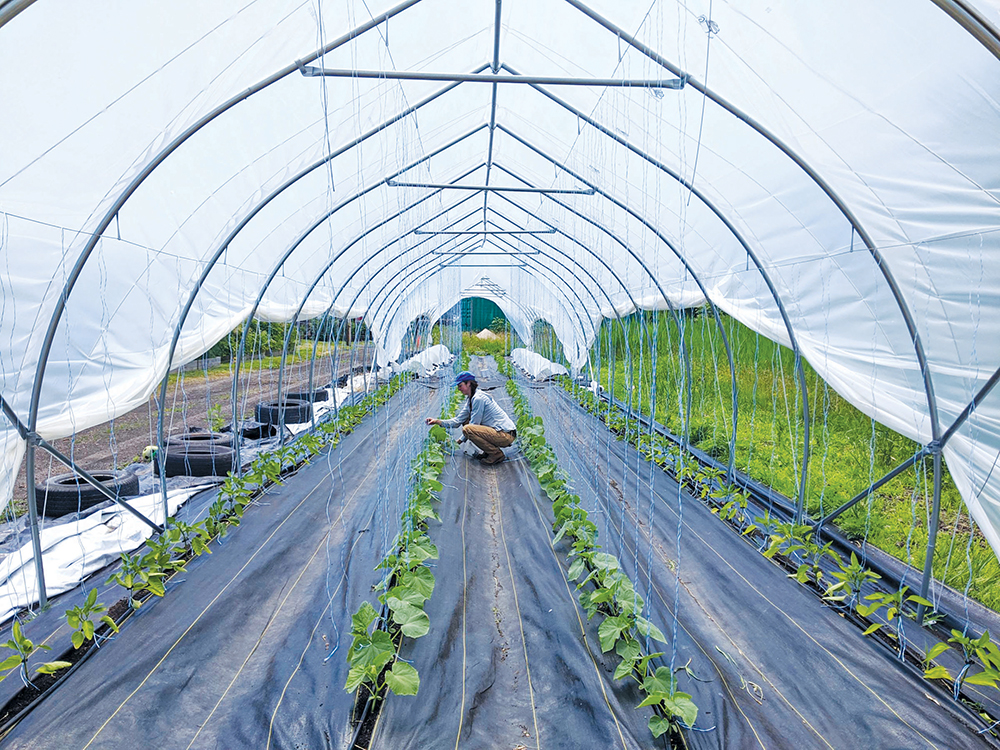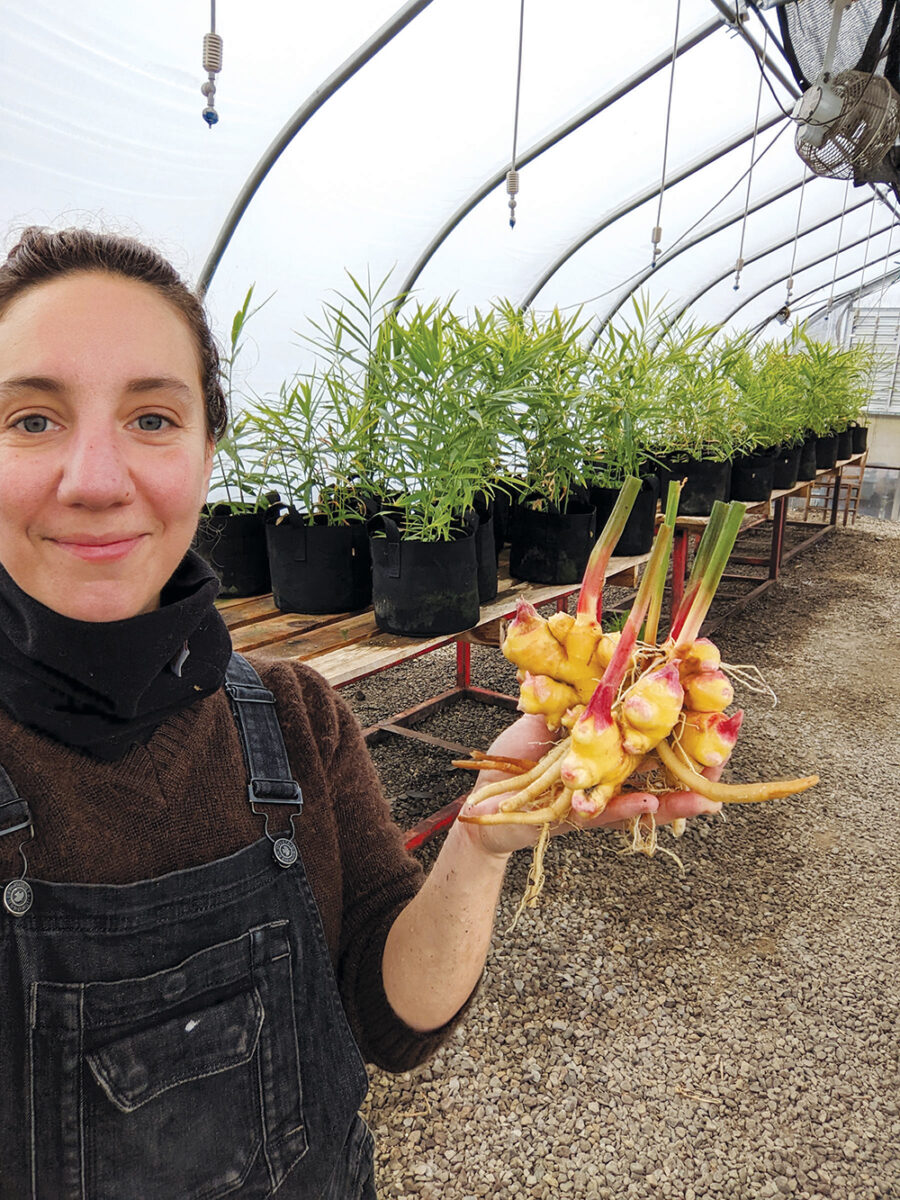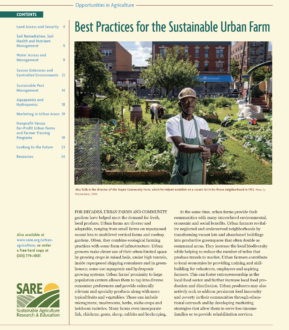Urban growers can get the most out of the growing season—and continue production into the off season—through season extension. Season extension strategies, especially physical structures, allow you to produce crops beyond their normal growing window by protecting them from harsh weather like freezing temperatures and strong winds. Products grown and stored for off-season sales can sometimes earn more than when they are sold in season. You can also use season extension structures to improve crop growth and yield. All of this means your farm can generate more stable income and, potentially, more stable employment for farmworkers.
Structures like high tunnels, greenhouses and row covers trap and maintain heat to warm the soil, improve crop growth and even deter pests. Low tunnels, cold frames and raised beds are lower-cost alternatives to high tunnels that occupy less space. You can also use structures to get a good head start on the growing season by starting your crops indoors before transplanting in the spring.

Along with season extension structures, consider the use of cold-hardy cultivars, and natural and plastic mulches on the soil. Plastic mulches trap heat from the sun, increasing the temperature of the soil and speeding up plant growth. Windbreaks may be useful for protecting crops on farms exposed to strong winds, like rooftop farms, that directly damage crops or dry out the soil. Carefully selecting the site for your season extension structure can help you make the best use of sunlight. For example, orient your plants to the south-facing side of your farm because crops get more sunlight from this direction. Take advantage of natural light as much as possible and supplement with artificial light if necessary.
If you are growing crops in high tunnels or other structures, keep in mind that pests may be different from what you would see in field conditions. For example, insect pests like aphids, thrips and mites that thrive in dry environments are more prone to outbreaks in season extension structures.
It’s also important to consider soil salinity when using high tunnels or hoop houses. High tunnels protect crops from rainwater, but over time salts from fertilizers, composts and other soil amendments may build up in the soil and become harmful to your crops, so you should regularly test your soil salinity levels.
Post-harvest and storage practices can improve the shelf life and lengthen the marketing window of your crops. Preserve produce over the short term by storing crops at their optimal temperature and humidity levels. Common short-term storage options include refrigerated walk-ins, root cellars or cold rooms. Canning, pickling, fermenting, drying and processing are good ways to preserve crops in the long term while also adding value. It’s important to familiarize yourself with all regulations associated with selling food products prior to getting started; laws will vary by state. University of Minnesota Extension provides recommendations for developing a food safety plan and practices and resources in their “Growing Safe Food” guide.
Season extension can offer many benefits, but you may find the infrastructure is costly to acquire, especially for smaller-scale and beginning farmers. Financial assistance is available through cost-share programs like NRCS’s Environmental Quality Incentives Program (EQIP) for high tunnels and other season extension structures. The FSA’s Farm Storage Facility Loan Program can help producers finance cold storage options. Learn more about season extension strategies you can use on your farm in the SARE bulletin, High Tunnels and Other Season Extension Techniques.
Profile: Low-Cost Alternatives for Season Extension in Buffalo
New York
FNE20-961: Economic Feasibility of Caterpillar Tunnels on Urban and Small-Scale Farms
In 2020, Mayda Pozantides and Anders Gunnersen of Groundwork Market Garden received a SARE Farmer grant to test the economic feasibility of caterpillar tunnels on their 3-acre urban farm in Buffalo, N.Y. They were interested in using caterpillar tunnels as a lower-cost season extension alternative to high tunnels, which are often cost prohibitive to small-scale farmers.

Compared to high tunnels, caterpillar tunnels are smaller, made from lower-cost materials like wire hoops and floating row covers, and can be taken down during the off-season. Caterpillar tunnels are typically 6–8 feet tall and cover the width of multiple growing beds. Low tunnels are a yet smaller option that are typically 2–3 feet high and the width of one growing bed.
The goal of Groundwork Market Garden’s project was to compare the economics of vegetable production in caterpillar tunnels with in-field beds over two growing seasons. They standardized their caterpillar tunnels and in-field growing bed to 50 feet long by 2.5 feet wide and tracked costs associated with labor and production inputs, along with yield data like yield quantity, length of harvest and fruit size.
Over the course of their project, Pozantides and Gunnersen found that cucumbers and bell peppers grown in the caterpillar tunnels were harvested earlier and for longer than in-field ones. Caterpillar tunnels extended the growing season by up to six weeks. As a result, Pozantides and Gunnersen were able to introduce a new winter CSA, which can be critical to the survival of new urban farms because it extends the revenue stream through more of the year.

However, caterpillar tunnels aren’t without challenges. During the first year of the project, Pozantides and Gunnersen saw higher pest pressures in the caterpillar tunnels. Caterpillar tunnels also required more initial labor and input costs due to the need to buy and set up the tunnels over beds. By the end of the two-year project, they didn’t reach a breakeven point with the tunnels, but with the production numbers they were seeing they expected the tunnels to bring a substantial profit in the third year.
Pozantides and Gunnersen plan to make further improvements to their caterpillar tunnel growing system. One way is by including insect netting, which they hope will reduce the number of pests like cucumber beetles. Another way is by focusing on growing cold-hardy leafy greens, which were the most profitable crop during the project. They shared what they learned with other urban producers through farm tours, grower-oriented articles and collaboration with urban agriculture organizations and Cooperative Extension.
